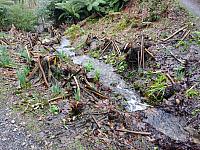Well – it has taken some time (and partially explains the lack of posts), but I think I’ve got my personal websites set up “just so” now.
The core engine is still WordPress, which is running headless to provide all the content to the front-end. I use WordPress admin to manage the site, write posts, update pages, and so on. The interaction is via WPGraphQL, which took a bit of effort to get working, but provides a nice standard API to access the details.
The front end (www.eutony.net) now runs off nextjs, running on a node server. So the majority of the site is rendered at build time, with the semi-dynamic pages (the front page, photos, and archive) using Incremental Static Regeneration (ISR). The truly dynamic pages (infinite scroll on front page, and search results) are still built on demand. It does mean that if I want to change the style or certain aspects of the context I need to rebuild the whole site, but I think it’s worth it. Nextjs is a pretty steep learning curve. I started off trying to host it in Vercel, but unfortunately my hardware wasn’t able to keep up with the API demands the free Vercel puts on it, so it’s self-hosted.
The photos site (photo.eutony.net) is still served by a standard HTTP daemon. There are one or two other sites also running in this way.
The really exciting thing is that all of these (including the database) are running in Docker containers, behind an nginx server, which handles the SSL offloads, and reverse proxying. Docker compose brings up the whole shebang. The best bit is that it’s essentially zero-configuration for the host machine, beyond installing Docker. As it happens, it’s all running on a Raspberry Pi, and the move to Docker was a result of having to reformat the SD card to upgrade the OS. The thought of having to install and configure Apache, WordPress, MySql, LetsEncrypt, was too much.
In practice this means that my entire website is host agnostic – if I want to move it to an cloud provider such as Azure, it’s a simple as spinning up the containers there instead (plus a bit of DNS jiggery-pokery). All the code and configuration (except for secrets) is managed in source control. Docker is so good, in that it helps me keep the host environment clean and light, it means I can run the containers anywhere, and it means my exposed services are sandboxed so if they do get compromised the attackers don’t gain access to my server. It’s also so lightweight I can run the 7 or so containers alongside each other without overloading the very limited hardware.
Finally, the whole thing is sitting behind Cloudflare. I don’t get enough traffic to really need a CDN, but it lifts a bit of the load off the Pi, plus of course means that my IP address doesn’t get exposed, which is a good thing.
In terms of backups, I mainly rely on all the configuration and HTML/CSS/JS being in source control, so it’s just the database and any uploaded files which need backups. There’s a nightly script which takes care of that, but in the next exciting instalment I’ll be sharing my backup strategy!

